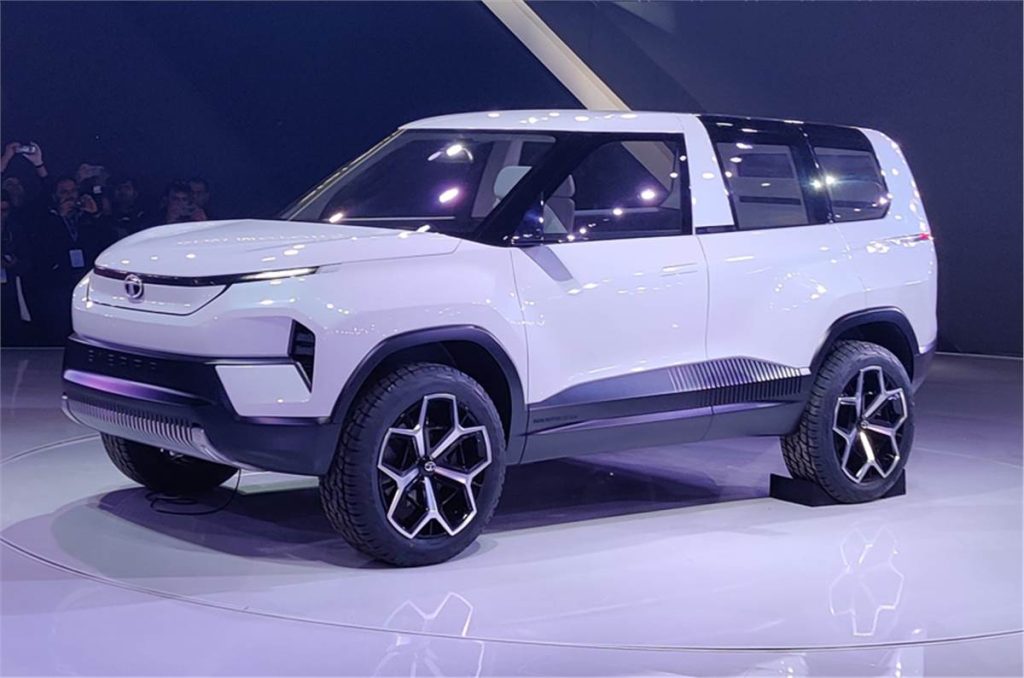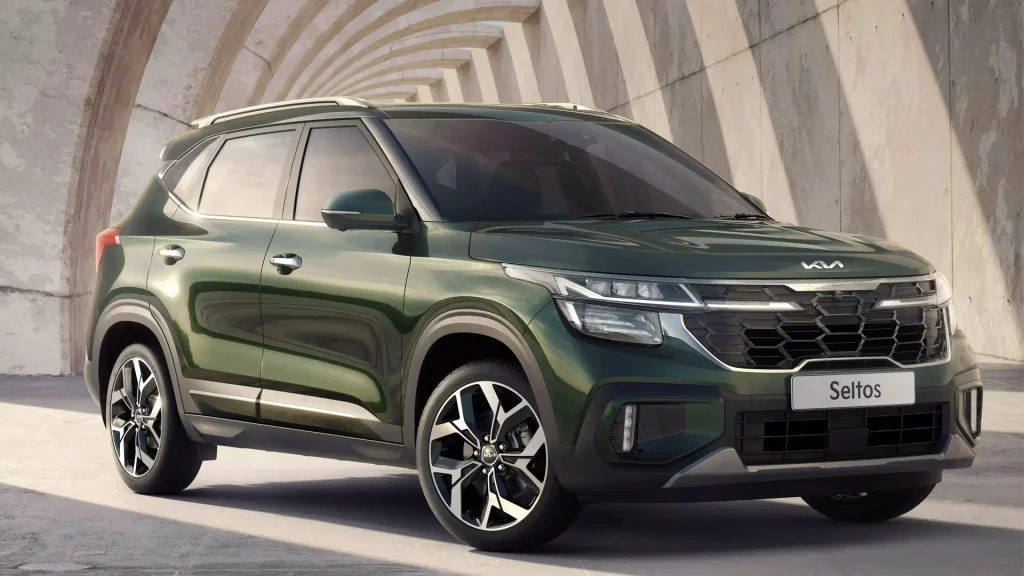After more than two decades away from production, the iconic Tata Sierra has returned with a vengeance. Launched on November 25, 2025, with an introductory price starting at approximately $13,800 (₹11.49 lakh), this reimagined legend enters one of the most competitive automotive segments globally: the mid-size SUV market. But can this nostalgic nameplate with modern swagger truly challenge the established dominance of proven champions like the Hyundai Creta and Kia Seltos?
For American automotive enthusiasts tracking global SUV trends, this three-way battle offers fascinating insights into what the future of affordable, feature-packed SUVs might look like. While these specific models aren’t currently sold in the United States, their design philosophy and value propositions mirror the competitive dynamics reshaping the American compact SUV segment, where vehicles like the Honda CR-V, Mazda CX-5, and Toyota RAV4 continue to dominate sales charts.
The Legend Returns: What Makes the 2025 Tata Sierra Special?
The original Sierra, which rolled off production lines in 1991, became a cult icon for its distinctive three-door design and rugged character. Now, Tata Motors has brought it back as a thoroughly modern five-door SUV that bridges the gap between the Nexon and Harrier in their lineup—positioning it squarely against the segment leaders.
Design Philosophy: Bold, Boxy, and Unmistakably Different
The new Sierra maintains an upright, boxy stance that pays tribute to the original’s robust proportions while incorporating sleek, modern styling elements. While most competitors in the best mid-size SUVs category embrace rounded, aerodynamic forms, the Sierra stands out with its angular personality—think Land Rover Defender meets contemporary Indian design sensibility.
The front features LED light bars that stretch across the fascia, giving it a futuristic edge while maintaining that commanding road presence. At the rear, you won’t find the iconic tail-gate mounted spare wheel of yesteryear, but the design still manages to capture that adventure-ready spirit that resonates with today’s SUV buyers.

Interior Technology: India’s First Triple-Screen Setup
This is where Tata pulls out all the stops. The Sierra features a three-screen setup—a first in Tata’s range of cars—giving passengers their own dedicated display. This segment-first feature positions it ahead of even the Creta in terms of raw technology count. Lower variants come with a dual-screen layout, but even this feels premium for the price point.
Other standout features include:
- Panoramic sunroof with touch controls
- Ventilated front seats for enhanced comfort
- 360-degree camera system with 14 different views
- Level 2 ADAS with 20 autonomous features including adaptive cruise control and lane-keeping assist
- 5G connectivity with OTA updates for up to 10 ECUs
- Dashboard-integrated soundbar for immersive audio
- 622 liters of boot space (expandable to 1,257 liters with rear seats folded)
These specifications rival what you’d find in the top-rated compact SUVs in the American market, demonstrating how global automotive technology is rapidly equalizing across regions.
Powertrain Options: Something for Everyone
The Sierra offers three engine options catering to different driving preferences and budgets. The 1.5-liter naturally aspirated petrol produces 106 PS and 145 Nm, paired with either a 6-speed manual or 7-speed DCT. The 1.5-liter turbo diesel delivers 118 PS and 260 Nm with manual and automatic options, while the 1.5-liter turbo petrol cranks out 160 PS and 255 Nm.
An all-wheel-drive variant is reportedly in the works, and perhaps most exciting for the future: an electric version is expected in late 2025 or early 2026, potentially offering up to 500 km (approximately 310 miles) of range. This EV strategy aligns with global trends where electric powertrains are becoming increasingly important in the SUV segment.
The Reigning Champion: Hyundai Creta
In the Indian market, the Creta has essentially written the playbook for the mid-size SUV segment. With sales consistently topping 18,000 units per month, it’s the vehicle every competitor must benchmark against. For American readers, think of the Creta’s market position as similar to what the Toyota RAV4 represents in the US—a default choice for millions of buyers.
Feature-Rich DNA That Wins Customers
The Creta comes equipped with dual 10.25-inch displays for infotainment and instrumentation, Level 2 ADAS functionality, panoramic sunroof, ventilated front seats, and an 8-speaker BOSE audio system. While the Sierra matches or exceeds many of these features on paper, the Creta’s execution has been refined over years of customer feedback and multiple iterations.
The Creta’s 360-degree camera system offers excellent clarity, the blind-spot monitoring system is genuinely useful in urban traffic, and the overall fit and finish feels a notch above what Asian brands have traditionally offered—though that gap is rapidly closing as manufacturers like Tata invest heavily in quality improvements.
Proven Powertrains With Strong Track Record
The Creta offers three engines: a 1.5-liter naturally aspirated petrol (1,497 cc), a 1.5-liter diesel (1,493 cc), and a 1.4-liter turbo petrol (1,482 cc). The diversity of transmission options—including CVT, DCT, and torque converter automatics—means there’s a Creta configuration for virtually every driving preference.
The diesel engine has earned particular praise for its refinement. Combined with the segment-leading 190mm ground clearance and a spacious 433-liter boot, the Creta delivers a complete package that’s proven its reliability over millions of miles across diverse global markets.

Brand Value and Resale Consideration
Priced between approximately $13,300 and $24,600 (₹11.11 lakh to ₹20.42 lakh ex-showroom), the Creta spans a wide range. While it starts slightly higher than the Sierra, the Hyundai brand value, extensive service network spanning over 1,300 touchpoints, and historically strong resale values justify the premium for many buyers—a consideration that’s equally important in the American compact SUV market.
The Dark Horse: Kia Seltos
Often overshadowed by its Hyundai cousin despite sharing much of its mechanical DNA, the Seltos brings its own distinct personality to this battle. In the American context, Kia has successfully transformed its brand image over the past decade, and the Seltos exemplifies this evolution—offering style, substance, and value.
Design That Captures Attention
The Seltos features a 10.25-inch HD touchscreen navigation system with full digital cluster and 10.25-inch color LCD display, front ventilated seats with 8-way power driver’s seat adjustment, and a 360-degree camera with blind view monitor. The X-Line and SX variants add visual aggression with unique styling elements that appeal to younger, more style-conscious buyers.
Performance Edge for Driving Enthusiasts
The base 146-horsepower four-cylinder engine is fuel-efficient but modest in power delivery. However, the available 195-hp turbocharged four-cylinder (standard on X-Line and SX trims) is one of the strongest engines in this segment globally. This gives the Seltos a performance advantage over both the Creta and Sierra when equipped with the turbo motor—appealing to buyers who prioritize driving dynamics.
Technology and Warranty Leadership
The Seltos matches the Creta’s technology offerings while adding unique touches, including a more sport-oriented driving experience. Kia’s excellent warranty program—10 years or 100,000 miles on the powertrain—provides exceptional peace of mind. The vehicle features Level 2 ADAS with 19 autonomous features including forward collision warning, lane keep assist, smart cruise control with stop-and-go functionality, and blind spot collision avoidance assist.
Head-to-Head Comparison: The Battle for Supremacy
Value Proposition
Winner: Tata Sierra
Starting at approximately $13,800 with a triple-screen setup, panoramic sunroof, and segment-first features, the Sierra offers tremendous value. While final variant pricing isn’t yet available for all trims, the introductory offer positions it aggressively against both Korean rivals. In the context of best SUVs under $30,000, this value proposition would be extremely competitive even in the American market.
Technology & Features
Winner: Tata Sierra (by a narrow margin)
The triple-screen layout, 5G connectivity with extensive OTA update capability covering up to 10 ECUs, and dashboard-integrated soundbar give the Sierra a technological edge on paper. However, the Creta and Seltos counter with more refined execution and proven reliability of their systems over time. For tech-savvy buyers who prioritize cutting-edge features, the Sierra leads; for those who value proven reliability, the Korean twins hold an advantage.
Brand Trust & Resale Value
Winner: Hyundai Creta
Hyundai’s established global reputation, extensive service network, and historically strong resale values give the Creta a significant advantage. While Tata has made enormous strides in quality and service over the past five years, decades of customer trust can’t be built overnight. This factor becomes especially important for buyers concerned about long-term ownership costs and eventual resale value.
Driving Dynamics
Winner: Kia Seltos (Turbo variant)

With its most powerful engine option and sport-tuned suspension, the Seltos delivers the most engaging driving experience in this comparison. The Creta prioritizes comfort and refinement, while the Sierra’s dynamics are still being evaluated by long-term reviewers. For buyers who enjoy spirited driving, the Seltos turbo is the clear choice.
Design & Road Presence
Winner: Tata Sierra
This category is inherently subjective, but the Sierra’s bold, boxy styling makes it the most distinctive vehicle in this comparison. It’s a design that will age well and turn heads—something that’s increasingly rare in a segment where many SUVs look similar. The Sierra offers genuine design differentiation in a crowded market.
The American SUV Context: Lessons From Across the Pond
While the Sierra, Creta, and Seltos aren’t sold in the United States, this battle offers valuable insights for American consumers. The US SUV market tells a complementary story of rapid evolution and intense competition.
The best new SUVs of 2025 are ranked by experts based on safety features, price, fuel economy, technology, and value, with American buyers increasingly prioritizing these same factors that make the Sierra-Creta-Seltos battle so compelling.
According to recent market data, SUVs now dominate American new vehicle sales. The Toyota RAV4, Honda CR-V, and Mazda CX-5 stand out as top performers in the compact SUV segment, demonstrating consumer preference for vehicles that combine practicality with advanced features.
The American market’s appetite for hybrid powertrains is particularly noteworthy. The Honda CR-V hybrid provides up to 40 mpg according to EPA ratings, making fuel efficiency a major selling point. The Sierra’s upcoming electric variant positions Tata well for future export opportunities, though cracking the American market would require substantial investment in brand building and service infrastructure.
Performance enthusiasts have more options than ever. The Jeep Wagoneer S electric SUV accelerates to 60 mph in 3.4 seconds while delivering 303 miles of range, demonstrating that modern SUVs no longer require buyers to compromise between utility and performance.
For families seeking space and versatility, the Kia Telluride and Honda Pilot rank among the top midsize SUVs, offering three-row seating, advanced safety features, and compelling value propositions similar to what makes the Creta and Seltos successful in global markets.
The American market increasingly mirrors global trends: buyers want feature-packed vehicles at reasonable prices, with growing interest in electrification, advanced safety technology, and distinctive design. The Sierra’s bold approach to these priorities demonstrates that emerging automakers can compete effectively when they prioritize innovation and value.
Expert Recommendations: Which SUV Should You Choose?
Rather than declaring a single winner, the reality is that each vehicle excels in different areas—which is actually great news for consumers.
Choose the Tata Sierra if: You want cutting-edge features, bold design, and maximum value for money. You appreciate the heritage nameplate and don’t mind being an early adopter of Tata’s most ambitious SUV in years. The Sierra is perfect for tech enthusiasts and those who want to stand out from the crowd with a vehicle that makes a statement.

Choose the Hyundai Creta if: You prioritize brand trust, resale value, and a proven track record. The Creta is the safe bet—refined, feature-rich, and backed by one of the world’s largest automakers with an extensive global service network. It’s the choice for buyers who want confidence in their purchase with minimal risk and the assurance of strong resale value.
Choose the Kia Seltos if: You want a blend of performance, technology, and value with an industry-leading warranty. The Seltos splits the difference between the Sierra’s bold value proposition and the Creta’s established reliability. It’s ideal for driving enthusiasts who still want practicality and the peace of mind that comes with Kia’s exceptional warranty coverage.
Competition Benefits Everyone
Can the Tata Sierra dethrone the Hyundai Creta? That depends on how you define “king.” In terms of sales volumes, the Creta’s lead is substantial and unlikely to be overcome quickly—it took Toyota decades to build the RAV4’s market dominance in America. But in terms of innovation, features per dollar, and design distinctiveness, the Sierra has already made its mark.
The real winner in this three-way battle? Consumers, who now have three genuinely compelling choices in the mid-size SUV segment—each with its own strengths, personality, and appeal. The Sierra doesn’t need to dethrone the Creta to be successful. It just needs to carve out its own loyal following among buyers who want something different, bold, and unmistakably Tata.
Bookings for the Sierra open on December 16, 2025, with deliveries starting from January 15, 2026. This gives early adopters the chance to own a piece of Indian automotive history reimagined for the modern era.
For American automotive enthusiasts and industry watchers, this battle demonstrates how global competition is raising standards across all markets. The innovations pioneered in these vehicles—from advanced ADAS systems to triple-screen layouts to aggressive value pricing—will inevitably influence future products worldwide.
Whether you’re shopping for a compact SUV in Mumbai or Michigan, the principles remain the same: buyers deserve vehicles that combine safety, technology, style, and value. The Sierra-Creta-Seltos battle proves that competition drives innovation, and innovation ultimately benefits all consumers.
#MidSizeSUV #CompactSUV #SUVComparison #TataSierra #HyundaiCreta #KiaSeltos #BestSUV2025 #SUVBuyingGuide #FamilySUV #AffordableSUV #SUVReview #CarComparison #AutoNews #SUVFeatures #CompactCrossover #SUVTrends2025 #CarBuyingGuide #AutomotiveReview #SUVMarket #BestValueSUV


